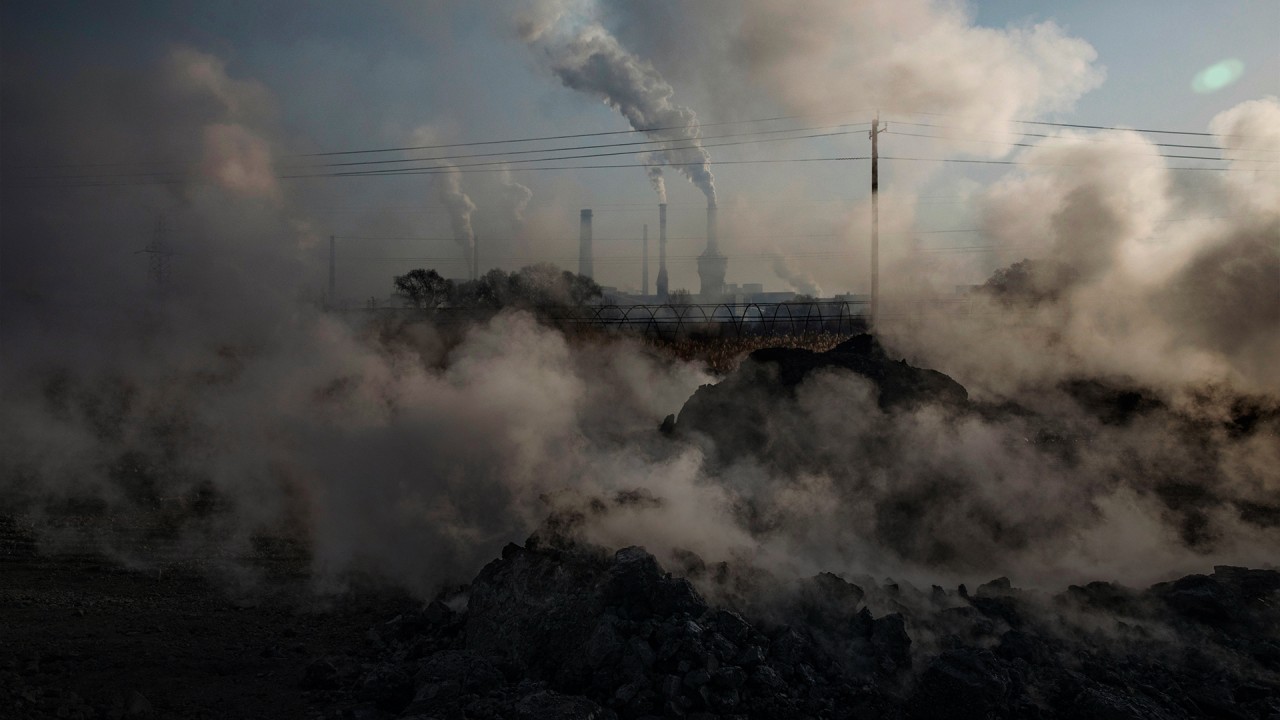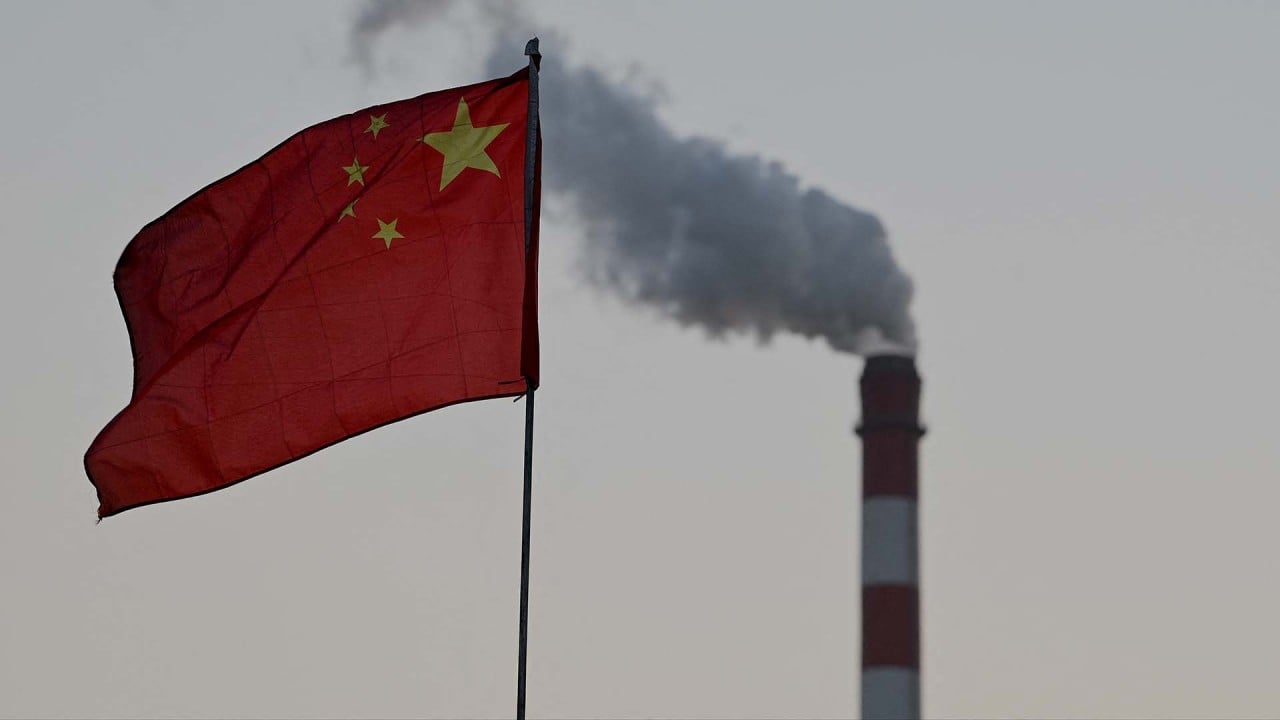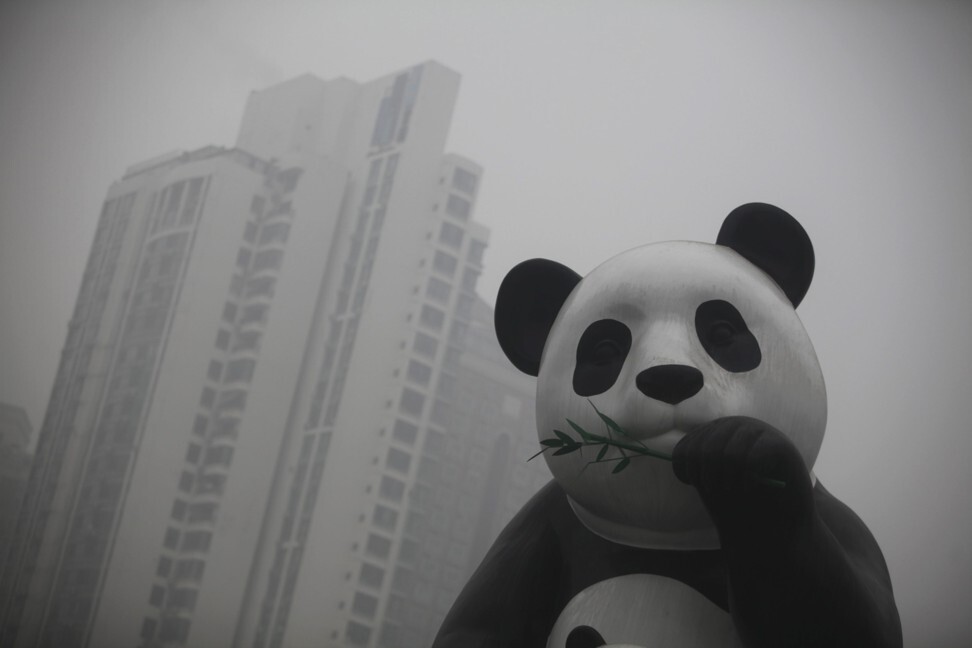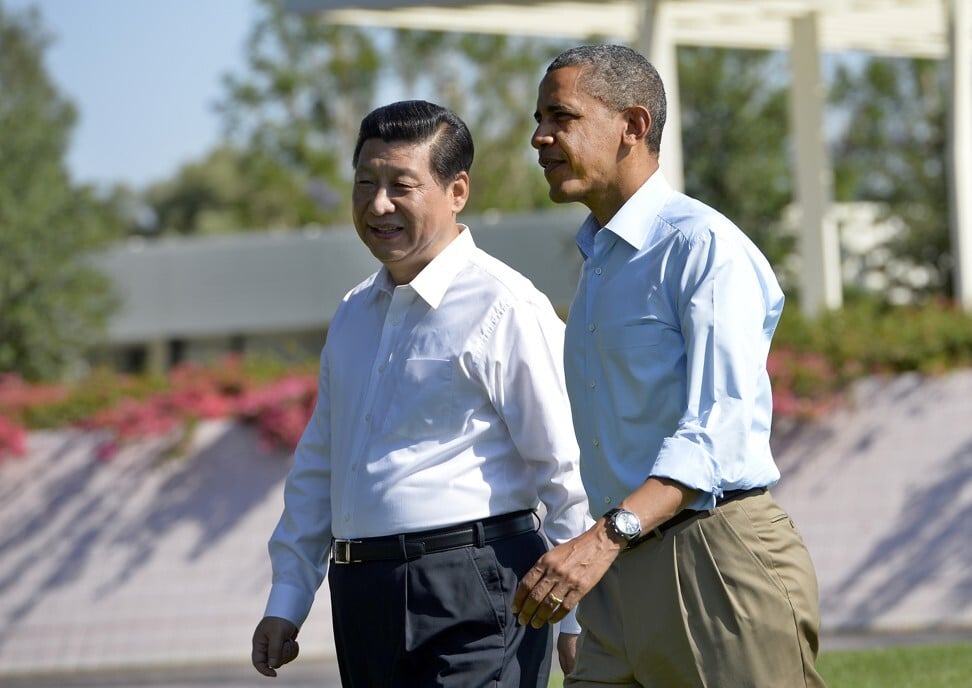
From ‘airpocalypse’ to carbon cutter: China’s road to climate reckoning
- In 2013, Beijing was blanketed in smog and relying on fossil fuels to drive its economy
- Now the focus is on ‘high-quality development’ and working with other countries to cap emissions
For much of the past few decades, China’s growth has been powered by fossil fuels, particularly coal. While the economic gains have been vast and rapid, the toll on the environment has been huge. In the first of a four-part series, Echo Xie looks at how China has sought to change development gear over the last decade to combat pollution and see a more sustainable future.
It was less than a decade ago that Barbara Finamore struggled to make out some of the buildings across the street from her Beijing office.
The founder of the Natural Resources Defence Council’s China programme remembers that on particularly bad days in 2013, heavy pollution hung over the Chinese capital, blanketing the cityscape.
In Beijing, levels of lung-damaging PM2.5 particulates were nearly 40 times the limit then suggested by the World Health Organization.
The story was the same across the country.
At the start of the year, severe smog engulfed a quarter of China, affecting 17 provinces and about 600 million people.
It gave impetus to a gradual shift to more sustainable development and cooperation with other countries to cap emissions.
For much of its last three decades of rapid economic growth, China has relied on heavy industry and fossil fuels to get ahead.
It proved an effective formula – in the decade after China joined the World Trade Organization in 2001, its gross domestic product quadrupled and exports nearly quintupled. China’s steel production rose nearly sevenfold from 2000 to 2014.
The extreme smog of early 2013 was a clear indication of just how bad the problem had become.
“It was very clear to China that the export-driven, fossil-fuel reliance development model was not sustainable. It was unbalanced,” said Finamore, now a senior visiting research fellow with the Oxford Institute for Energy Studies.
“Some studies show that a large percentage of Chinese GDP growth was getting eaten away … because of the health impacts and the environmental impacts caused by its heavy reliance on coal.
“The previous approach to GDP growth could not last forever.”

01:45
Beijing air quality reaches 'very unhealthy' levels as China ramps up coal output
Since then, China has gradually shifted its development model, from pursuing “growth at all cost” to “high-quality growth”, with environmental quality a core objective.
The shift has come from the top, with President Xi Jinping stressing that “ecological civilisation” – or sustainable development – must be an integral part of the country’s social and economic progress.
The concept was written into the constitution and the country stepped up efforts to tackle pollution.
In 2013, the central government announced that GDP growth – which has long been linked to officials’ promotion – would no longer be the sole determining factor. Two years later, the central government issued a decree, holding local Communist Party officials accountable for environmental degradation under their watch.
China insists it is taking ‘real action’ to tackle climate change after COP26 criticism
Also in 2013, 74 Chinese cities started releasing their PM2.5 data for public scrutiny, a number that rose to 338 within two years.
China also issued a five-year plan to tackle air pollution, aiming to cut the number of heavy air pollution days nationwide and achieve better air quality in key industrial areas, including the Beijing-Tianjin-Hebei region.
Meanwhile, vigorous efforts were made to cut coal consumption and rebalance the economy’s reliance on heavy industry for growth. Between 2013 and 2017, Hebei province, China’s main iron and steel production area, phased out 137 million tonnes of iron and steel capacity and 45 million tonnes of coal capacity.
The efforts have paid in many parts of the country. In July, Beijing and Hebei recorded their best monthly air quality since records began in 2013. And last year, Beijing’s annual concentration of PM2.5 was less than half its average for 2013.
A change in China was apparent on the international stage.
For much of the decade before the airpocalypse, Beijing approached United Nations climate summits as battlegrounds, with Xie Zhenhua, China’s climate envoy and then deputy chief of the National Development Reform Commission, accusing developed countries of using climate issues to restrict developing countries’ development.
At the Copenhagen climate conference in late 2009, countries were able to agree on the long-term goal of limiting the maximum global average temperature increase to no more than 2 degrees Celsius above pre-industrial levels. But there was no agreement on how to do this in practice, with China among the countries refusing to sign up for a mandatory target for emission cuts.
Fast forward to the Paris climate summit in 2015 and China had changed its tune. While it continued to stress “differentiated responsibilities” between developed and developing countries, China stepped up to take on greater climate responsibilities and play a more constructive role in the adoption of the Paris accord.
COP26: more than 100 nations pledge to cut methane, but not China
Teng Fei, deputy director of Tsinghua University’s Energy Environment Economy Institute, said China had come to a broader understanding of “development” as it took on pollution.
“The development we talked about should be high-quality development. It includes economic growth as well as people’s demands of the quality of the environment,” Teng said.
“Addressing climate change and pursuing sustainable development are consistent with high-quality development, so the changes happened.”

03:38
COP26 Glasgow, the UN Climate Change Conference: last chance to save the planet?
The success of the Paris talks rested in large part on the willingness of China and the United States to work together and followed intense diplomatic activity between the two countries.
The stage was set in 2013 when Xi and then US president Barack Obama had a two-day informal summit at the Sunnylands estate in California. Then US climate envoy Todd Stern also had frequent exchanges with Xie.
The next year, then US secretary of state John Kerry raised the idea with Xi that the two countries should jointly announce their targets for the Paris climate summit.
“The Chinese were open to it,” Stern said in an interview on a Georgetown University podcast in 2019.
It was followed by about nine months of intense negotiations and discussions. On the evening of November 11, 2014, Xi and Obama met in Zhongnanhai – the official work and residential compound in Beijing for top Chinese leaders.
COP26: China urges US to look at its own record on climate action after Biden condemns Xi’s absence
The meeting was originally scheduled to last two hours and 45 minutes, but ended up running to five hours, Zou Ji, president of Energy Foundation China, who coordinated the talks between the two countries’ leading experts, was quoted as saying by UK-based website Carbon Brief.
Zou said Obama pressed China to commit to peaking carbon emissions “by 2030”, but Xi resisted and would only agree to a timeline of “around 2030”. While Obama finally agreed to the expression of “around 2030”, China added a line: “… and to make best efforts to peak early”.
The two countries issued a joint and pivotal statement the next day, declaring their post-2020 climate actions. China announced to peak carbon emissions around 2030 and would strive to peak emissions earlier. The US planned to cut 26 to 28 per cent of emissions from 2005 levels by 2025.
It was a high-water mark for China-US cooperation on the environment, observers said.
“We have seen the pinnacle of diplomacy [between the two countries]. For some time in the future, or forever, I don’t think we will exceed that peak,” said Li Shuo, a global policy adviser for Greenpeace East Asia.
Li said a number of factors came together to make the moment.
“Air pollution, diplomacy and the economy are three key driving factors of China’s climate and environmental transition,” he said.
Floods, fire and pestilence for China as climate change comes home to roost
“China’s high-carbon economic stimulus after the 2008 financial crisis was gradually fading away. Air pollution was severe. On diplomacy, both China and the US needed to make major political decisions at the Paris climate summit.
“We were lucky ... to have all these three factors intertwined and the shift happened.”
The climate cooperation between China and the US lasted until the end of Obama’s term in early 2017, when US president Donald Trump ushered in an antagonistic stand on Beijing and walked away from the Paris Agreement.
Teng said China and the US had pragmatic cooperation on climate during Obama’s first term, including the setting up of the US-China Clean Energy Research Centre, attracting participants from academia and the corporate world.

01:42
China increases coal production to ensure winter supplies, easing energy shortage
“Since the US has changed its strategy towards China, and technological cooperation with Chinese companies and businesses has come to a stop,” he said. “The US has shut the door of cooperation unilaterally.
“Now in the US, cooperation with China faces intense scrutiny. In this atmosphere, which American scientists would want to cooperate with China?
“China, the US and the European Union are not only top emitters but also masters of key technologies towards carbon neutrality. Other countries will have greater confidence in these technologies if they can confirm their commitment to achieve carbon neutrality by 2050 or 2060.
“If so, then we can also hope that these technologies can be applied on a large scale and at lower cost before 2050.”
Greenpeace’s Li said that in Glasgow, China and the US should calmly deal with their conflicts to create better political conditions for the two countries, as well as the international community, for future climate action.
“Climate issues are part of the relationship and affected by geopolitical conflicts,” Li said. “China and the US have to avoid finger pointing, and work hard to generate enthusiasm at home for reducing emissions.”







